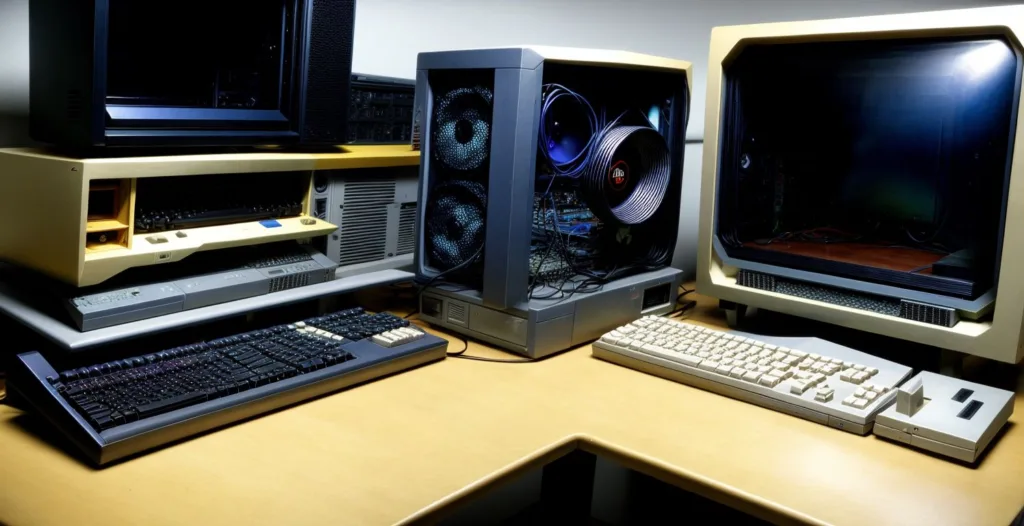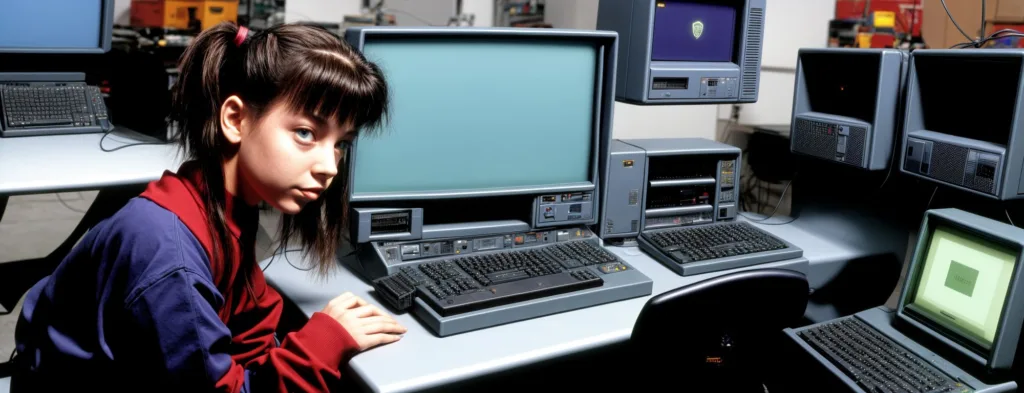We were explorers then, pioneers of a digital frontier. The early ’90s were days of discovery, a time when the World Wide Web was more a cobweb of disjointed networks rather than the information superhighway it is today. With the charm of dial-up modems and the screech of connection, the internet was a nascent, untamed realm where cyberculture was just beginning to take root.
In the ebb and flow of trends, it’s often said that what goes around comes around. The past few years have seen a surprising resurgence of ’90s cyberculture, with its rudimentary aesthetics, unpolished platforms, and charmingly awkward online etiquette. At the same time, we are grappling with the high-speed, high-stakes reality of today’s digital world. By revisiting the dawn of our digital age, we can glean insights for navigating our present and shaping our future.

Armed with a 14.4 Kbps modem and a head full of dreams, we charted the web with a sense of wonder and novelty. Despite its limitations, or perhaps because of them, the ’90s internet was a place of creativity and experimentation. It was the age of personal homepages, early chat rooms, and the beginnings of online communities. Every webpage was a labor of love, hand-coded in HTML, adorned with pixelated gifs and tiled background images. Even in its simplicity, it bore the mark of human effort, the touch of an individual creator.
Today’s internet, with its sleek interfaces and seamless user experiences, is far more sophisticated. But amidst the homogeneity of design and algorithm-curated content, there’s a sense of nostalgia for the raw, unfiltered charm of ’90s web pages. It’s no coincidence that platforms that emulate the aesthetics of early internet have gained popularity. They offer a space for personal expression, away from the commercialized, polished veneer of mainstream social media.
In this resurgence, there’s a lesson for us. The appeal of ’90s cyberculture lies not just in its aesthetic, but also in its ethos: an ethos of exploration, creativity, and individual expression. As we navigate the complexities of our digital reality, it’s worth revisiting these principles. They remind us of the internet’s potential as a platform for self-expression, a canvas for our creativity, a space for us to be uniquely, unabashedly ourselves. In the face of algorithms that often dictate what we see and do, the lesson is clear: the human touch matters. In our digital interactions as much as in our physical ones, our individuality is our strength.
The ’90s internet was also characterized by a different kind of online etiquette. Netizens often embraced a sense of camaraderie, perhaps born from the feeling of being part of something new, something revolutionary. There was an unspoken agreement to be respectful and helpful. Trolling, while it existed, wasn’t as widespread or malicious as it is today. In many ways, it was a more innocent time online.

Today, the internet is a different beast. Online etiquette often seems like an oxymoron. Hateful comments, trolling, and cyberbullying have become so commonplace that they are almost accepted as part of our online existence. However, the resurgence of ’90s cyberculture brings with it a longing for that older, kinder internet. There’s a growing push for a more respectful online discourse, and several online communities are taking a stand against hate speech and harassment.
The lessons here are manifold. Firstly, that respect and kindness matter, even behind the anonymity of a screen. An online comment has the power to make someone’s day or ruin it. Secondly, it reminds us of our responsibility as netizens. The internet is what we make of it, and each of us has a role to play in shaping its culture. Lastly, it’s a reminder that change is possible. Just as the internet has evolved over time, so can our online behavior.
On the technology front, we’ve come a long way from dial-up modems and Netscape Navigator. Today’s internet is high-speed and omnipresent, accessible from the device in our pocket. Information is at our fingertips, available in a fraction of the time it took a ’90s modem to connect. Yet, the frustrations of slow connections and constant disconnections taught us patience and the value of information.

In today’s world of instant gratification, where page load times of more than a few seconds make us impatient, there’s something to be learned from our ’90s experience. Despite our advancements, patience remains a virtue, even in the digital age. Furthermore, in an era of information overload, discerning the value and reliability of information is crucial. The ’90s taught us to appreciate each byte of information we received, a lesson that still applies today: quality over quantity, reliable sources over speedy, unchecked ones.
As we continue to evolve with the digital age, lessons from the past provide valuable insights for our journey. The charm of the ’90s internet lies not just in its nostalgia but in its relevance, offering us valuable perspectives on creativity, online etiquette, and the value of information.


